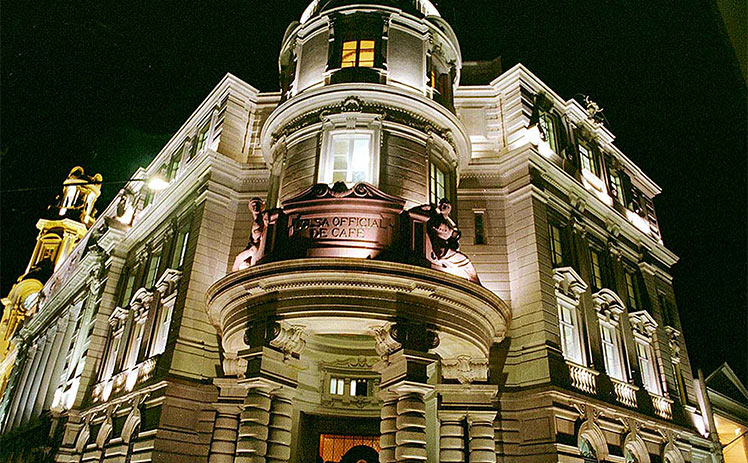We will discuss two interesting coffee museums on two different continents. The first will be a museum of one of the great powers of coffee, Brazil. The other, also a prestigious museum, is in Austria.
Brazil Coffee Museum (Museu do Café Brasileiro), Santos, São Paulo, Brazil
This place is the stronghold of Brazilian coffee. Coffee is an important factor in the huge Latin American country’s history, a branch of a coffee-shrub gets a place in the national coat of arms, as well as a thriving tobacco shrub.
The plant influenced mostly the State of Sao Paulo, coffee received a special role in the foundation of close to 90% of the cities! In some cities, such as Santos -which gives place for the museum-, clearly the coffee was the engine of development, the beloved beverage gets at the tables of coffee aficionados through the port of Santos, and the coffees will get a trademark Santos-1 or Santos-2 after the port city’s name, according to their quality grades.
The museum -which is famous for it’s exhibitions and it’s beautiful building- opened it’s doors in the building of the old Coffee Exchange (Palácio da Bolsa Oficial de Cafe) in 1922 under state control, with the aim of monitoring the coffee trade.
The so-called “Auction Room” functioned for decades as the center of the coffee trade and the favorite haunt of Sao Paulo’s elite. On the ground floor, we may now find a research center, but in the last century, stocks were exchanged here while the barons observed the evolution of business transactions from the mezzanine.
The splendid room decorated with stained glasses and paintings received a place in the eclectic tower and it is still one of the main attractions in the museum.
The visitors of the museum may enjoy a real time travel: we can follow the long path of coffee from the arrival of the first coffee shrub in Brazil through the development of plantations until today.
We can learn about the coffee-making process, as well as the habits of Brazilian coffee farms and the rural folk elements, in addition, the museum pays special attention to the social and economic changes caused by coffee, such as the expansion of the rail network.
The museum plays an important role in barista training. In addition to the monthly starting courses, they organize other classes, workshops and discussion evenings.
The coffee shop of the museum is one of the foremost in São Paulo; those who are interested may select from a huge range of the coffee specialties of the various regions of Brazil and may purchase the grists or taste it locally.

The exhibition also commemorates Jacinto. The famous man was a port worker of Spanish or Portuguese descent, who received the name “Samson of the wharves” after his triumph on a strong tournament. According to the legend, Jacinto was able to carry 5 coffee bags or about 300 kg simultaneously on his shoulders!
Today the port workers consider this to be impossible, they alleged that one person can cope with a maximum of two sacks (120 kg). No one knows how much is the truth in the stories about the strong young man, and whether he is a real person or not.
Coffee Museum in Vienna (Wiener Kaffeemuseum), Vienna, Austria
Let’s go back to Europe, because if we want to talk about a considerable coffee museum, Austria will certainly provide topics. The Café Museum of Vienna is operated by the Kaffee Kompetenz Zentrum, various events and workshops are also organized.
The primary goal here is the emphasis of coffee’s economic, social and cultural aspects, however, not an initiative of the state, but the passion of an enthusiastic private man played the major role in the creation of the museum.

Edmund Mayr, the curator thinks that we should pay attention to the first-class cultural values. He opened his 50-year-old private collection before the public in 2003. While we are walking through the showrooms of Wiener Kaffeemuseum we get to know the history of coffee, we can admire the coffee machines from different centuries and cultures, grinders and other accessories.
In addition to the permanent exhibition, special temporary exhibitions alternate, but the building even gives place for concerts, readings evenings, product presentations and special seminars. The lucky ones are guided through the coffee heaven by Edmund Mayr personally.
